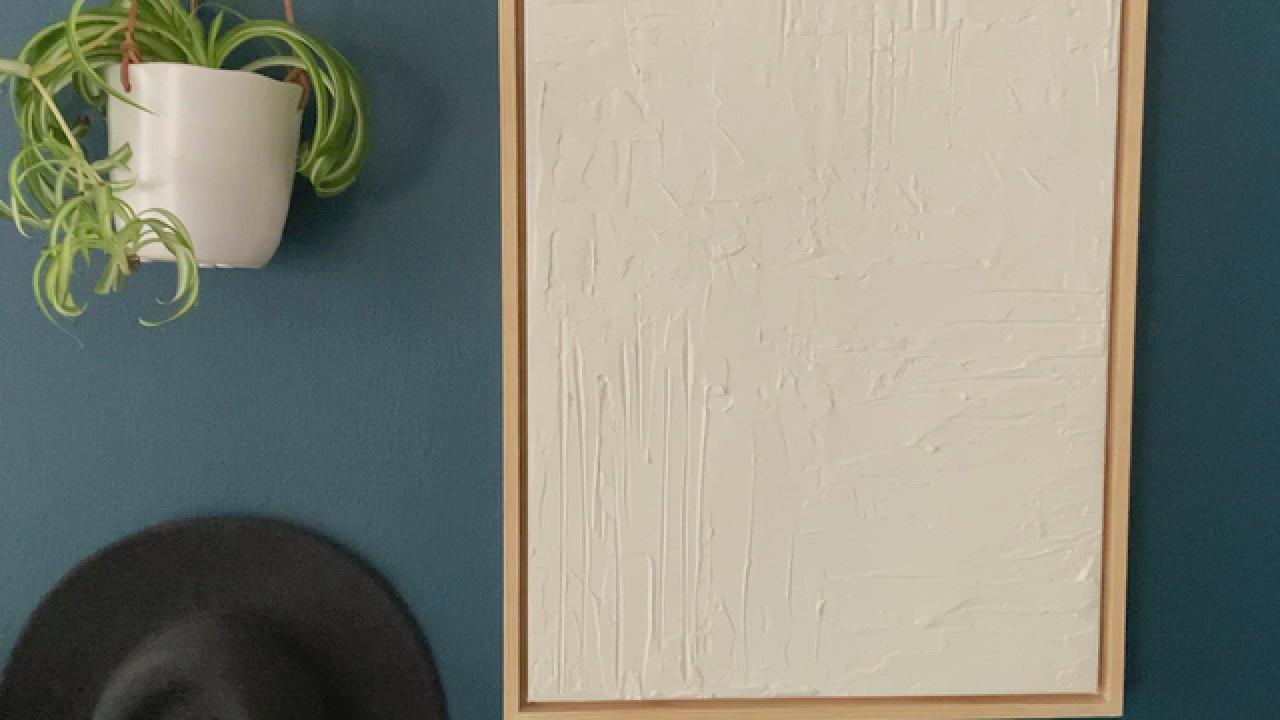How To Make A Float Frame
How to Make a DIY Floating Frame for Canvas Art
Requite your canvass artwork an easy, sleek upgrade by creating a DIY floating frame using bit forest. It simply takes a few piece of cake steps to requite your infinite a trendy refresh.

A floating frame can exist super expensive when purchased new. Simply, what if we told you that you lot could take a slap-up-looking frame at just a fraction of the cost? Using flake woods (and a few extra supplies), give your sail artwork an easy upgrade with a sleek touch by making this DIY floating frame.
We're sorry, there seems to be an effect playing this video. Please refresh the folio or attempt again in a moment. If you continue to accept issues, please contact u.s.a. here.

For this project you will build two frames that will essentially go on top of each other, creating the illusion of a floating frame. Brand sure you're buying wood that will work with your canvas measurements.
Measure + Cut Forest for Inside Frame
For the within frame, the forest should overlap at 90-degree angles in the corners; to account for the overlap, yous want the sides to be slightly longer than the actual canvass size. Make sure yous effigy out your measurements carefully before doing whatsoever cutting. Measure the perimeter of the canvas and cut four pieces of the three/4-inch woods to size to fit the length of each side of the canvas.
Nail the Within Frame to the Canvas
Identify the smaller woods pieces every bit close to the back of the canvas as possible and blast into place (Images i + 2). Start with one side and line upward the wood so that information technology is flush to the corner and repeat with the side by side slice of wood, creating a 90-degree angle where they see (Image 3). Continue around the frame until information technology is consummate (Epitome 4). Sand down any crude corners until smooth.
Measure + Cut Woods for Outside Frame
For the outside frame, yous'll overlap the forest at 90-degree angles in the corners, so you will want to allow for two sides to exist slightly longer than the actual size of the frame you built around the sheet. Measure the perimeter of the inside frame and cut four pieces of the i v/viii-inch wood to size to fit the length of each side of the canvas.
Glue the Outer Frame to the Inside Frame
Starting with one side of the canvas, add forest glue on summit of the frame (Image i). Printing the cut piece of woods on top of it and clamp information technology in place (Epitome 2). Continue to glue and clamp all the pieces working in one direction so that it is flush to the corner, creating 90-degree angles where the corners come across. Continue around the frame until it is complete and set up to dry. Tip: If the wood pieces aren't lining upwardly properly in the corners, sand the pieces separately until they fit together earlier gluing.
Sand Down Uneven Corners
Once the frame is dry, remove the clamps and sand downwardly whatsoever edges with overhanging pieces of woods in the corners. Tip: Make certain to go on the sander straight while sanding.
Add Wood Filler
If there are any gaps in the corners, add together a piddling bit of woods filler in the cracks with your finger and wipe away any actress. Once dry out, lightly sand down whatever crude areas.
Wipe Clean and Hang Your DIY Floating Frame
Wipe off any backlog sawdust with a dry cloth. Add together a hanging kit to the back and hang.
Source: https://www.hgtv.com/design/make-and-celebrate/handmade/how-to-make-a-floating-canvas-picture-frame-out-of-wood
Posted by: huntoura1990.blogspot.com

0 Response to "How To Make A Float Frame"
Post a Comment